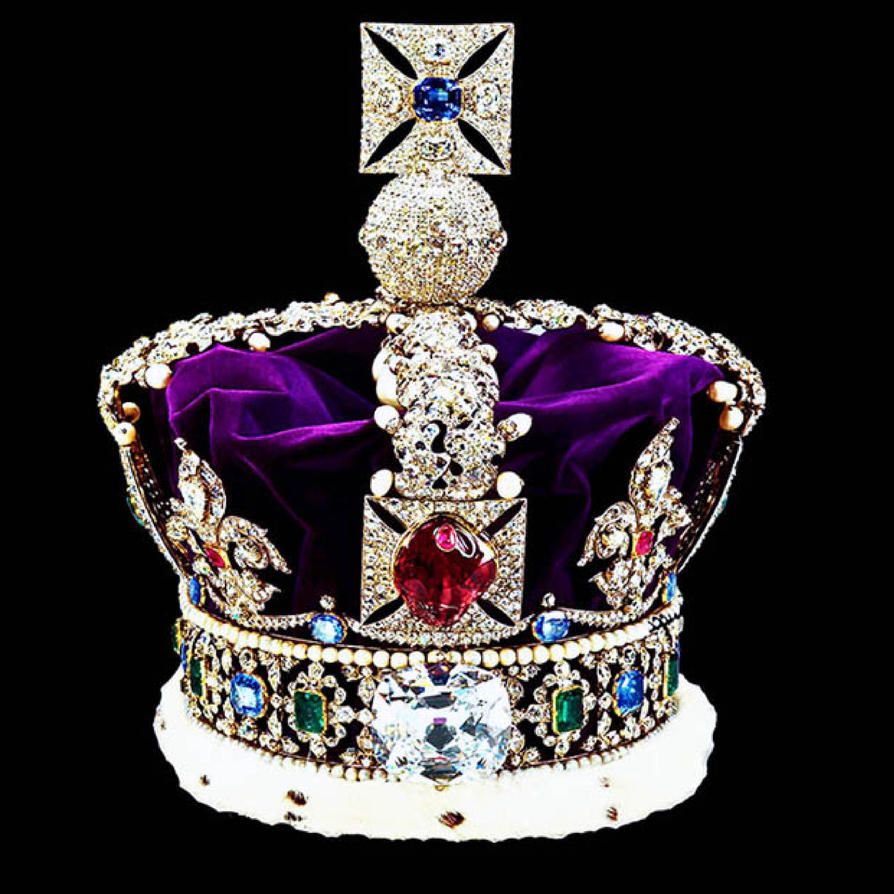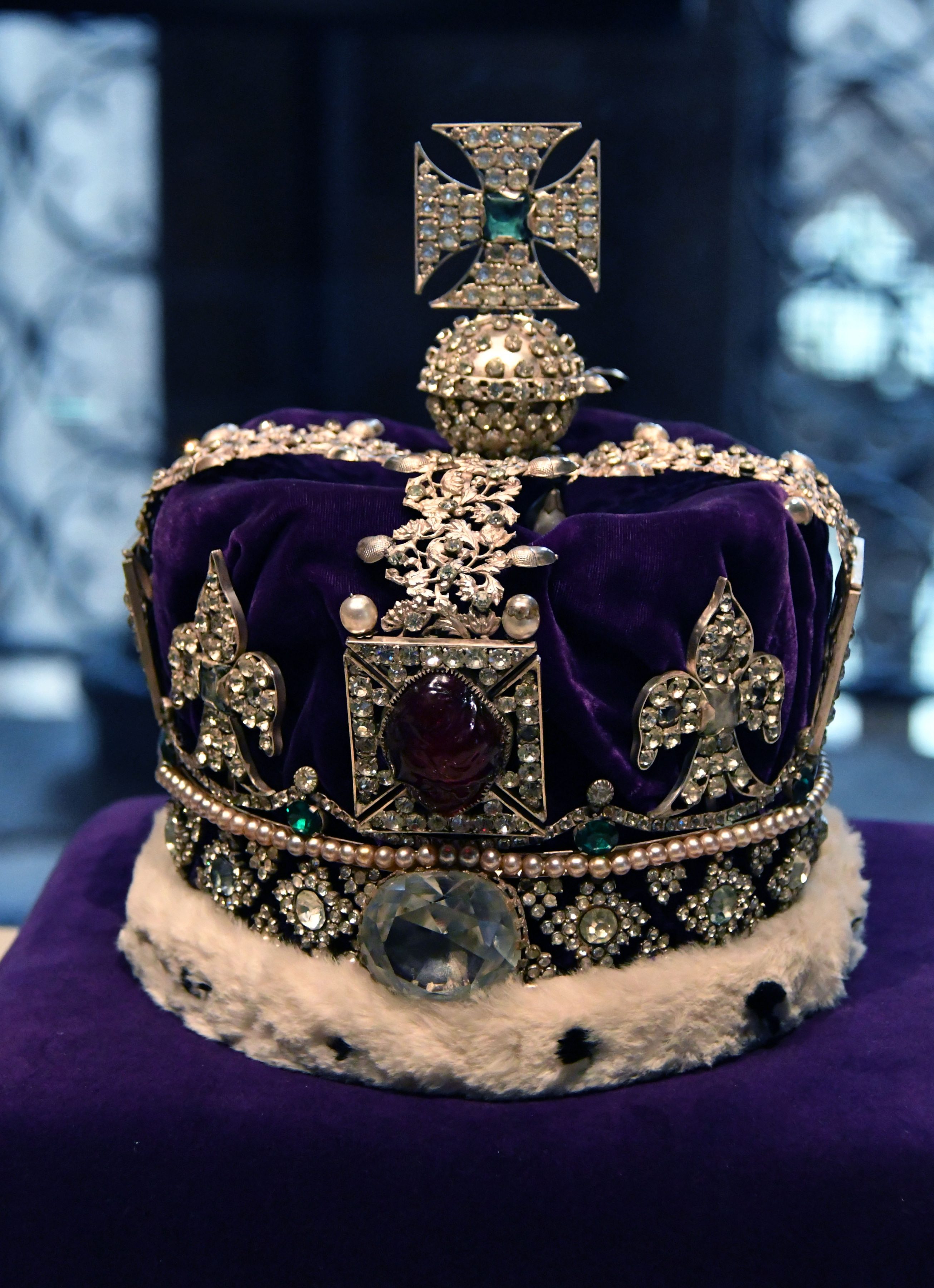Does a single object truly encapsulate centuries of tradition, power, and national identity? The answer, when considering Queen Elizabeth's Crown, is a resounding yes. It is far more than a glittering collection of jewels; it is a tangible link to a rich and often turbulent past, a symbol that continues to resonate with the British people and beyond.
The Crown, an integral part of the Crown Jewels, is a repository of history, artistic brilliance, and profound cultural meaning. Over the years, it has transformed, reflecting the ever-changing currents of history and the unique personalities of each monarch. This article delves into the captivating narrative behind Queen Elizabeth's Crown, examining its construction, the gems that adorn it, and its significance in royal ceremonies. We'll explore the intricate craftsmanship that went into creating this iconic object and how it embodies the values and traditions of the British Royal Family.
| Feature | Details |
|---|---|
| Full Name | Elizabeth Alexandra Mary Windsor |
| Born | April 21, 1926 |
| Reign | February 6, 1952 September 8, 2022 |
| Parents | King George VI and Queen Elizabeth (The Queen Mother) |
| Spouse | Prince Philip, Duke of Edinburgh |
| Children | Charles III, Princess Anne, Prince Andrew, Prince Edward |
| Education | Privately educated; studied constitutional history |
| Known For | Longest-reigning British monarch; dedication to public service; steadfastness |
| Key Accomplishments | Overseeing significant social and political changes; fostering international relationships; symbolizing national unity |
| Legacy | A symbol of stability, duty, and grace; a lasting influence on the monarchy's role in modern society |
| Official Website (Reference) | The Royal Family Official Website |
The Imperial State Crown, the version most often associated with Queen Elizabeth II, is a modern creation with roots deeply embedded in the past. Its story begins, in a sense, with the traditions of the British monarchy itself. The current iteration, meticulously crafted for Queen Victoria's coronation in 1838, has served as a constant presence in many state events, including the State Opening of Parliament, symbolizing the monarch's authority. The Crowns design has changed over time, subtly reflecting the evolving tastes of the royal family and the demands of historical context.
- Jalen Hurts Girlfriend Who Is Bry Burrows Relationship Amp More
- Winona Ryder Smoking A Look Into Her Habits Health Impact
The Imperial State Crown's use in coronations and other official events underlines the crown's critical role in the symbolic representation of the monarchy, serving as a powerful visual testament to continuity and tradition. The Crown has borne witness to significant moments in the United Kingdom's history and represents the monarch's official authority.
Key Historical Milestones
- 1838: Creation of the Imperial State Crown for Queen Victoria.
- 1937: Major alterations made for the coronation of King George VI, to make it lighter and easier to wear.
- 1953: Worn by Queen Elizabeth II during her coronation, a globally televised event that cemented her reign and the Crown's enduring image.
- Subsequent Modifications: Continued minor adjustments have been made over the years to maintain its structural integrity and aesthetic appeal, reflecting the evolving nature of the monarchy.
The creation of the Crown is a testament to the skill and artistry of the craftsmen who brought it to life. Standing approximately 30 centimeters tall and weighing around 1.06 kilograms, the Imperial State Crown is a masterpiece of design. It is a striking combination of gold and silver, set with a variety of dazzling precious stones, each chosen for its beauty and historical significance.
Materials Used
The Imperial State Crown is a testament to the skills of its creators, constructed from the following precious materials:
- Amber Rose Revah A Look At Her Career Impact
- Mia Goth Shia Labeouf A Deep Dive Into Their Lives Careers
- Gold: Forms the framework of the crown, providing its structure and the base for the setting of the jewels.
- Silver: Often used in conjunction with gold, for additional detail or support within the design.
- Precious stones, including diamonds, sapphires, and emeralds: These gemstones are integral to the Crown's visual impact, adding brilliance and value. Their arrangement is carefully planned to balance aesthetics with symbolic meaning.
- Other materials: Depending on the specific version and alterations, other elements such as velvet or specific linings can be found within the construction.
Perhaps the most captivating feature of Queen Elizabeth's Crown is the breathtaking array of jewels that adorn it. These gems are more than mere embellishments; each one carries its own story, interwoven with history, intrigue, and significant value. They include diamonds, sapphires, emeralds, and pearls, reflecting the Crown's importance and the grandeur of the British monarchy.
Notable Jewels
- The Cullinan II Diamond: Also known as the "Second Star of Africa", this is one of the largest cut diamonds globally. Its incredible size and flawless clarity make it a standout. The Cullinan II is a central element in the Crown's design, reflecting the wealth and power of the monarchy. Its origins are linked to South Africa, symbolizing the historical connections between the British Empire and its colonies.
- The Stuart Sapphire: This striking blue sapphire has a remarkable history, rumored to have been owned by King Charles II. Its deep color and the stories linked to it contribute to the mystique of the Crown. It sits prominently on the back of the crown.
- St Edward's Sapphire: The oldest gem in the Crown Jewels, believed to have been worn in a ring by Edward the Confessor and set in the cross at the top of the Crown.
- Black Prince's Ruby: Despite its name, it is not a ruby, but a large red spinel that has a fascinating history.
The cultural and national significance of Queen Elizabeth's Crown extends far beyond its physical form. It is a potent symbol of continuity, embodying the traditions of the monarchy that have endured for centuries. The Crown is not simply an emblem of royal authority; it is a powerful representation of the British identity, its heritage, and its enduring values.
The Crown as a National Symbol
Through the centuries, the Crown has featured prominently in ceremonies and events that celebrate British heritage. It is a constant reminder of the unity and strength of the nation, symbolizing the historical continuity and the shared identity of its people.
The Crown's appearance at significant state events solidifies its symbolic weight. The State Opening of Parliament, coronations, and state funerals are occasions when the Crown is most visible, emphasizing its role in national life.
The Crown offers a tangible link to the past, evoking memories of significant moments and individuals in British history. It is a tangible reminder of the evolution of the British monarchy and the nation.
The Imperial State Crown is most famously seen during the State Opening of Parliament, a pivotal event in the British political calendar. The Crown's presence symbolizes the monarch's role in government and the importance of the parliamentary system. This act represents the monarch's constitutional role and emphasizes the principles of governance that underpin the United Kingdom.
Key Events Featuring the Crown
- State Opening of Parliament: The monarch wears the Imperial State Crown to open each session of Parliament, signifying the royal role in the legislative process.
- Coronations: The coronation ceremony is the most significant use of the Crown, where the monarch is formally crowned, marking the beginning of their reign.
- State funerals and memorials: The Crown is often displayed on the coffin or during memorial services for deceased monarchs and other members of the Royal Family, symbolizing the continuity of the monarchy.
The Crown's impact is felt throughout the United Kingdom. The symbolism of the Crown, which is a visual reminder of Britain's history, is known to be both powerful and accessible to all.
Here are some intriguing facts about Queen Elizabeth's Crown:
- The crown is often referred to as the "Crown of State", emphasizing its official role.
- It contains a total of 2,868 diamonds, demonstrating its opulence.
- The crown is worn only for ceremonial purposes and is not used in daily life, preserving its significance. The weight of the crown, combined with the value of its jewels, means that it is only used for official occasions, ensuring its preservation.
- The Sovereign's Orb, another part of the Crown Jewels, is often held by the monarch during the coronation ceremony.
The Crown, a symbol of royal power and national identity, has been worn by generations of monarchs. Its beauty and significance continue to captivate the imagination. The jewels and materials that comprise the Crown are a testament to the skill of the craftsmen and the heritage of the Royal Family.
- Unveiling Abigail Shapiro Biography Career Influence Explained
- Confusing Riddles Brain Teasers Mindbending Puzzles


